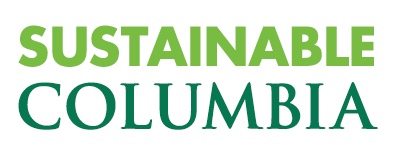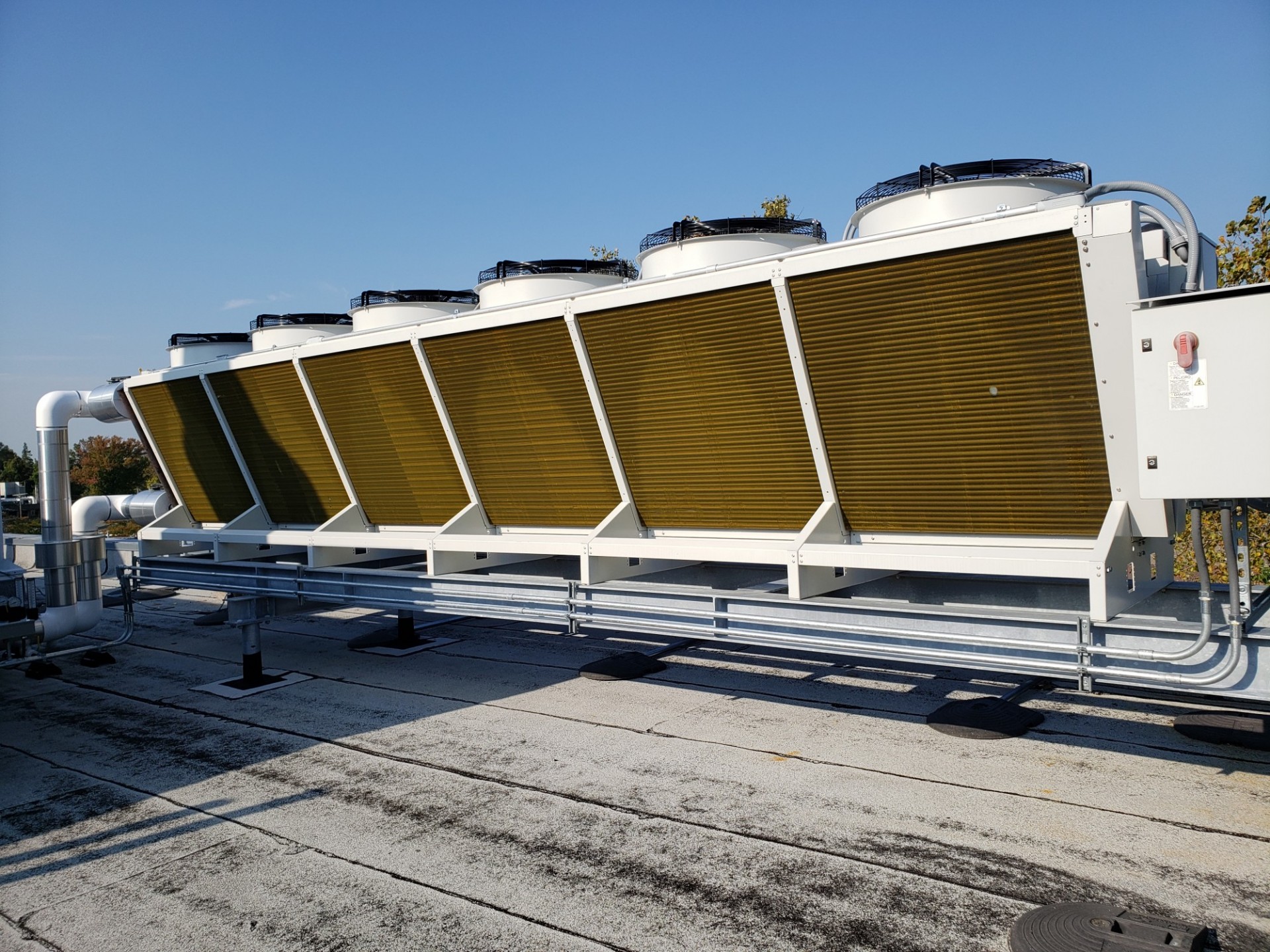The Comer Geochemistry building houses more than two dozen state-of-the-art wet chemistry and mass spectrometer laboratories. The building features unique utilities, like equipment cooling water, delivered directly to the laboratories to support specialized equipment. Rather than cooling this specialized equipment with inefficient air cooled chiller modules, these machines are cooled directly by the same rooftop chillers serving the air conditioning system.
While this innovative approach increases the building efficiency, it unfortunately requires the building chillers to produce cold water year-round rather than only during the air conditioning months. The excess run-time has caused components in the chillers to fail prematurely, and has risked reducing the useful life of some components by almost 30 percent.
To address this risk, a brand new Guntner dry cooler was commissioned by Lamont Facilities to alleviate excess strain on the building’s chillers. The dry cooler is a simple heat exchanger and fan that cools the building’s chilled water system directly using outside air in winter months. This solution allows the energy intensive chillers to remain off for almost a third of every year, extending the useful life of the building chillers by more than five years.
This project aligns with Lamont’s vision for energy efficiency and Columbia's Plan 2030 by taking advantage of the free cooling that winter outdoor air temperatures can provide. With this new equipment the campus is expected to save over 200,000 kilowatt hours (kWH) of electricity and $21,000 in utility costs annually, as well as an average $10,000 per year in maintenance costs. The electricity savings alone will save 141 Metric Tons of carbon dioxide equivalent (CO2e) annually, or 2115 Metric Tons CO2e over the life of the equipment. This is the annual equivalent of 2338 tree seedlings sequestering carbon for 10 years.[1]
[1] “Greenhouse Gas Equivalencies Calculator” United States Environmental Protection Agency

